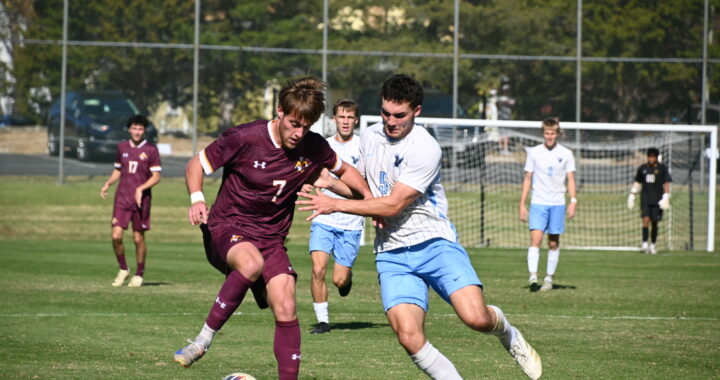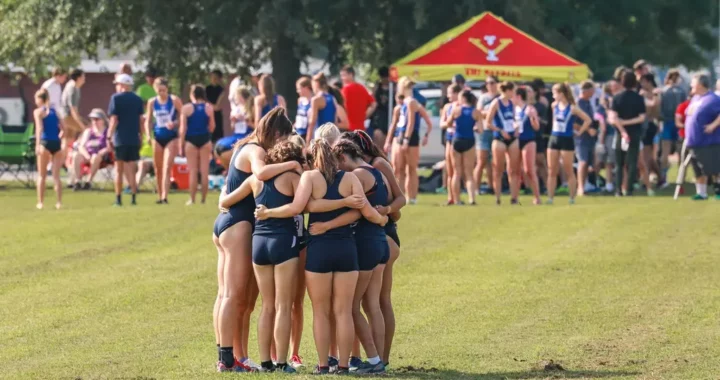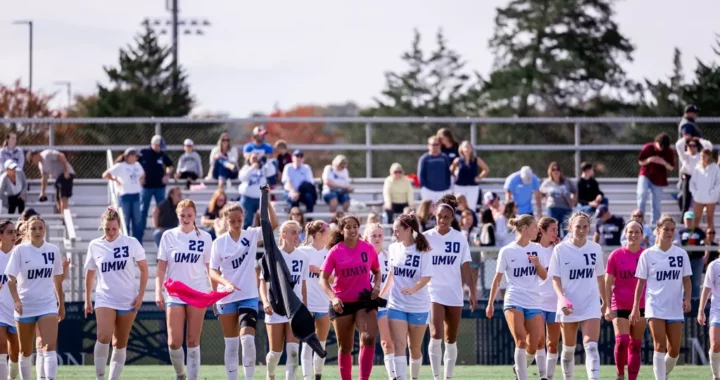UMW Equestrian; Not Horsing Around
3 min readSaturday, the UMW Equestrian team will wrap up their fall season at Towson University in their conclusion to a successful campaign the team put together.
In three of the first four competitions, the team finished second out of 16 teams in zone 4, region 1, of the International Horse Show Association (IHSA). This region includes teams from Virginia, Maryland and Washington D.C., including Christopher Newport University, Goucher College, Mount St. Mary’s University and American University.
On the day of competitions, riders usually leave Fredericksburg at 6 a.m. to arrive at the meet. Around 9 a.m. riders line up by height. They are divided among seven events based on skill level and technique employed. The include walk-trot, beginner and advanced walk-trot-canter; novice, intermediate and open fences and flat according to the IHSA websiste.
In flat and walk-trot-canter, there aren’t any jumps. It requires riders to manipulate the horse within a certain area. In the open fences event and riders have to maneuver around and over obstacles in the course, according to senior Nicole Cerniglia, a walk-trot competitor and a member of the UMW equestrian team. Both manuvers require the utmost skills. In bothcenarios, riders are tasked with making a 2,000-lb. creature follow their command.
This is no small order but the procedure of competitions and the conditions under which they compete is what makes it even more challenging is . The riders don’t know what horse they will be riding until right before the competition. Both men and women compete in the same division because riders “don’t need a certain type of ability to ride, [they] will still be held to a standard,” said Cerniglia. Stewards assign horses to each riders, the tallest ones first because larger individuals cannot compete on smaller horses.
Riders do get the chance to adjust the stirrups of the saddle hat comes with their horse before competing. Having correct stirrups are particularly important because all balance and control is derived from them. These two are the main components to technique and furthermore, equitation, the art or practice of horse riding or horsemanship.
When they are on the horse, “it’s all about adjusting,” Cerniglia said, “keeping what the judge wants to see, keeping your seat a certain way and your hands certain way.”
While other sports competitors are judged against each other, there is no curve in equestrian. Each rider must look aesthetically pleasing and must make the act of riding a horse seem easy and effortless.
Every rider competes in the particular event during which time, athletes in other events are scouting. Riders examine every horse that goes through, picking up on subtleties in the way the horse acts; knowing what it likes and doesn’t want. Making a mistake in the ring costs the rider their own score while at the same time strengthening another rider’s knowledge of the horse.
Riders conclude their performance and the judges give their scores. IHSA competitions are different from traditional competitions in the sense that teams are judged as a whole in addition to just the riders being judged. First place receives 7 points, second place receives 5, third place 4, fourth place 3, fifth place 2 and sixth place 1. Scores are tallied at the end of the day, and ribbons are given out. A perfect 49 is a rare.
Other than an eighth place finish last weekend at the College of William and Mary IHSA show, the team has had three place finishes, two times to Goucher College and once to Christopher Newport University. Individually, the team boasts having junior Molly Banfield who is the current points leader in the region. Banfield has 45 points to date. Sophomores Alyssa Zarzecki and Mackenzie Walsh have already qualified for regions.
The team looks to avenge their losses and, individually, looks to keep gaining points on Saturday, where they compete for the last time this fall. Over the off season, they will be in the gym two days a week, training individually with professionals and training as a team one day a week.


